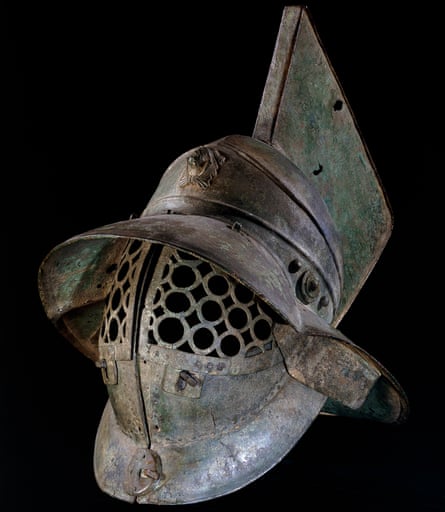Exhibition of the week
Luxury and Power
The struggle for power between ancient Greece and the Persian empire, seen in a radical new light.
British Museum, London, from 4 May to 13 August.
Also showing
Alfredo Jaar
The Pinochet dictatorship established in Chile 50 years ago is remembered through the protest art it provoked from Jaar.
Cecilia Brunson Projects, London, until 4 June
Joe Tilson
A celebration of Tilson’s colourful conceptual pop art in his 95th year.
Marlborough Gallery, London, until 3 June
Hannah Quinlan and Rosie Hastings
Portraits by this duo who combine art history with a provocative take on modern life.
The Box, Plymouth, until 4 June
Feliks Topolski
Expressive paintings of British society in the postwar era, including observations of royalty to mark the coronation.
Topolski Studio, London, from 3 May until 15 July
Image of the week
Rory Pilgrim was this week announced as one of the nominees for this year’s Turner prize. Nominated for Rafts at the Serpentine and Barking town hall and a live performance of the work at the Cadogan Hall in London the artist worked with with communities in Barking and Dagenham to create a social practice of stories, poems, music and film “to reflect on times of change and struggle during the pandemic”. Pilgrim is joined on the shortlist by Jesse Darling, Ghislaine Leung and Barbara Walker and their work will be exhibited at the Towner Eastbourne from 28 September before the winner is announced in December. Read the full story here.
What we learned
Big stars have chosen photos for a giant Richard Avedon centenary show
Frank Auerbach hopes to die with a paint brush in his hand
Salvador Dalí’s sculptures will be hitting the streets of Shrewsbury
Renaissance woman Lavinia Fontana had bottom-fondling audacity
Artist Isaac Julien didn’t think he would live to see the 90s
Mothers are making gamechanging art
The world is a worry for artist Jeremy Deller
Elephant artworks are interrogating Korean life – and one has just won a $100,000 prize
A Kyiv museum is curating the war with Russia
The National Gallery of Australia is facing authenticity concerns over its Aboriginal art
Masterpiece of the week

Gladiator’s helmet from Pompeii, before AD 79
The art of dying well was practised by an enslaved gladiator wearing this helmet, probably in the arena at Pompeii, the ruined city where it was reputedly found. The arena is still well preserved. Pompeii’s citizens would have been entertained with lavish mortal combats: frescoes and mosaics from Pompeii depict gladiatorial fights with brutal realism. You can even see inside the “school” where they lived. This helmet has an image of the muscular hero Hercules on it: by putting it on, the gladiator would be symbolically transformed into Hercules as a savage slaughter was transfigured into mythology. But the people watching little knew death would come to them soon, in the shape of a pyroclastic flow from nearby Vesuvius.
British Museum, London.
Don’t forget
To follow us on Twitter: @GdnArtandDesign.
Sign up to the Art Weekly newsletter
If you don’t already receive our regular roundup of art and design news via email, please sign up here.
Get in Touch
If you have any questions or comments about any of our newsletters please email [email protected]

